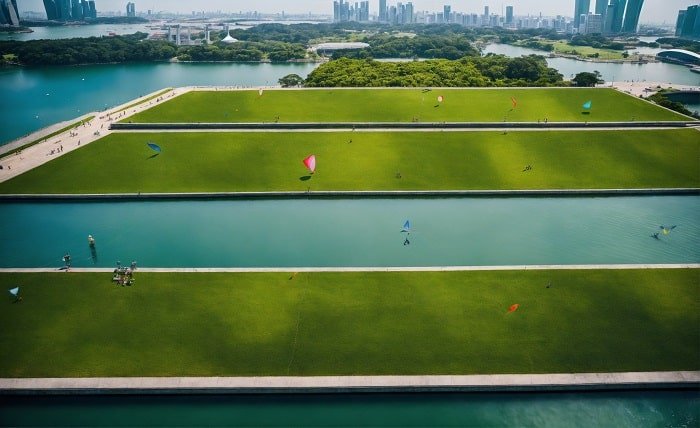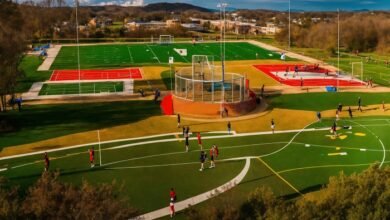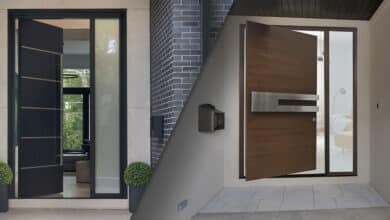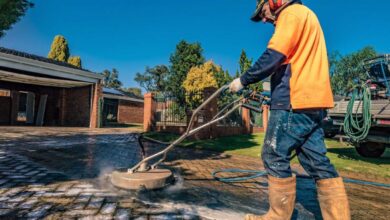Belle Turf: A Comprehensive Guide to This Innovative Landscaping Solution

Belle Turf has emerged as a groundbreaking solution for homeowners seeking a beautiful, low-maintenance lawn. With its impressive features and benefits, Belle Turf is revolutionizing how we think about landscaping. In this comprehensive guide, we will explore everything you need to know about Belle Turf, from its unique characteristics to the installation process and maintenance tips. Whether you’re considering Belle Turf for your garden or just curious about its advantages, this blog post will provide you with all the essential information.
What is Belle Turf?
Belle Turf is a state-of-the-art artificial grass product designed to mimic the appearance and feel of natural grass. Unlike traditional grass, Belle Turf is crafted from high-quality synthetic materials that offer durability, aesthetic appeal, and minimal upkeep. The name Belle Turf represents elegance and innovation in landscaping solutions. This turf is ideal for residential and commercial applications, providing a lush, green landscape year-round without the need for regular mowing or watering.
Advantages of Choosing Belle Turf
Choosing Belle Turf offers numerous benefits. Firstly, it eliminates the need for regular maintenance, saving homeowners time and money. Additionally, Belle Turf is resistant to wear and tear, ensuring it remains looking pristine despite heavy foot traffic. Another significant advantage is its ability to withstand various weather conditions, making it a reliable choice for any climate. Furthermore, Belle Turf contributes to water conservation efforts by reducing the need for irrigation.
How Belle Turf Compares to Natural Grass
Belle Turf offers several advantages over natural grass. While natural grass requires consistent mowing, fertilizing, and watering, Belle Turf remains low-maintenance, requiring only occasional cleaning. Belle Turf also eliminates issues related to pests and diseases that can affect natural grass. Unlike natural grass, Belle Turf maintains its vibrant color and texture throughout the year, regardless of seasonal changes. This makes Belle Turf an appealing choice for those seeking a hassle-free landscaping solution.
Installation Process for Belle Turf
Installing Belle Turf involves several key steps. First, it’s essential to prepare the ground by removing existing grass, weeds, and debris. Next, a base layer of crushed stone or gravel is laid to ensure proper drainage and stability. Once the base is prepared, Belle Turf is rolled out and trimmed to fit the area. The turf is then secured in place using stakes or adhesive. Finally, the seams are joined, and any additional infill material is applied to enhance the turf’s stability and appearance. Proper installation is crucial to achieving a seamless and long-lasting Belle Turf surface.
Maintenance Tips for Belle Turf
Maintaining Belle Turf is relatively simple compared to natural grass. Regular brushing helps to keep the fibers upright and prevent matting. It’s also important to remove any debris, such as leaves or twigs, to keep the surface clean. For spills or stains, a gentle cleaning solution and a soft brush can be used to remove any residues. In areas with heavy use, occasional replenishment of infill material may be necessary to maintain the turf’s appearance and performance. Overall, Belle Turf requires minimal effort to keep it looking its best.
Cost of Belle Turf vs. Natural Grass
The cost of Belle Turf can vary based on factors such as the size of the installation area and the quality of the turf chosen. While the initial investment in Belle Turf may be higher than planting natural grass, it often proves to be more cost-effective in the long run. Belle Turf eliminates ongoing expenses related to lawn maintenance, such as mowing, fertilizing, and watering. Additionally, its durability and longevity mean that homeowners will not need to replace their turf frequently. Considering the overall savings on maintenance and water usage, Belle Turf presents a financially advantageous option.
Environmental Benefits of Belle Turf
Belle Turf offers several environmental benefits. By reducing the need for water, it contributes to water conservation efforts, particularly in areas with water scarcity. Additionally, Belle Turf eliminates the need for chemical fertilizers and pesticides, which can be harmful to the environment. The reduced need for lawn maintenance equipment, such as gas-powered mowers, also helps to lower greenhouse gas emissions. Overall, choosing Belle Turf supports sustainable landscaping practices and contributes to a healthier planet.
Common Misconceptions About Belle Turf
There are several misconceptions about Belle Turf that should be addressed. One common myth is that artificial grass is harmful to the environment, but as previously mentioned, Belle Turf actually helps to conserve water and reduce chemical usage. Another misconception is that Belle Turf looks unnatural, but advances in technology have made it possible to create artificial grass that closely resembles natural grass. Some people also believe that Belle Turf is uncomfortable, but modern designs ensure that it provides a soft and comfortable surface for various activities.
Belle Turf in Different Applications
Belle Turf is versatile and can be used in a variety of applications. It is commonly installed in residential lawns, creating a lush and inviting outdoor space with minimal maintenance. Belle Turf is also popular in commercial settings, such as parks, playgrounds, and sports fields, where durability and appearance are crucial. Additionally, Belle Turf is used in decorative applications, such as rooftop gardens and indoor spaces, to add a touch of greenery without the constraints of natural grass.
Future Trends in Artificial Grass and Belle Turf Innovations
The future of artificial grass, including Belle Turf, is promising with ongoing innovations and trends. Advances in technology are leading to the development of even more realistic and durable turf options. Researchers are exploring new materials and manufacturing processes to enhance the performance and appearance of Belle Turf. Additionally, there is a growing emphasis on eco-friendly products, with new formulations designed to be more sustainable and environmentally friendly. As the demand for low-maintenance and aesthetically pleasing landscaping solutions continues to rise, Belle Turf is poised to remain at the forefront of the industry.
Conclusion
Belle Turf represents a significant advancement in landscaping solutions, offering a combination of beauty, durability, and low maintenance. With its numerous advantages over natural grass, including cost savings, environmental benefits, and ease of upkeep, Belle Turf is an excellent choice for both residential and commercial applications. By understanding the installation process, maintenance requirements, and potential benefits, you can make an informed decision about incorporating Belle Turf into your landscaping plans. As technology continues to evolve, Belle Turf is set to remain a leading choice for those seeking a high-quality, hassle-free lawn solution.
FAQs
1. How long does Belle Turf typically last? Belle Turf is designed to be highly durable and can last 10 to 15 years or more with proper care and maintenance.
2. Can Belle Turf be used for pets? Yes, Belle Turf is pet-friendly and can handle regular use by pets. It is easy to clean and resistant to odors.
3. Is Belle Turf suitable for all climates? Belle Turf is versatile and can be used in various climates. It is designed to withstand different weather conditions, including extreme temperatures.
4. How do I clean Belle Turf? Cleaning Belle Turf involves brushing the surface regularly, removing debris, and using a mild cleaning solution for spills or stains.
5. Can I install Belle Turf myself, or should I hire a professional? While it is possible to install Belle Turf yourself, hiring a professional can ensure a proper installation and optimal results.





